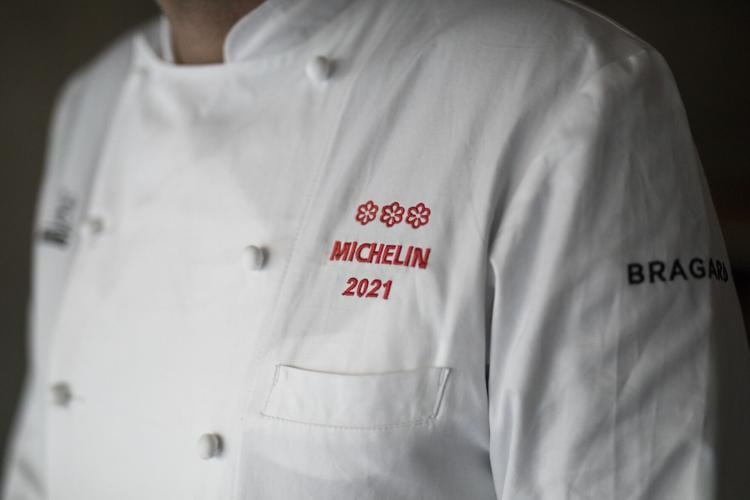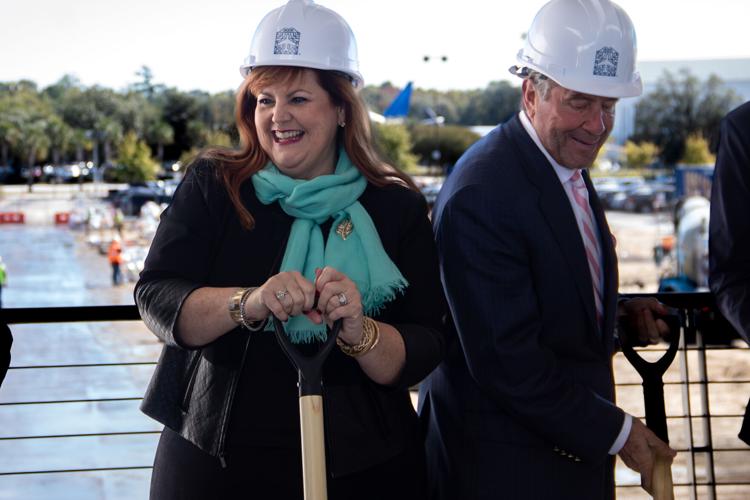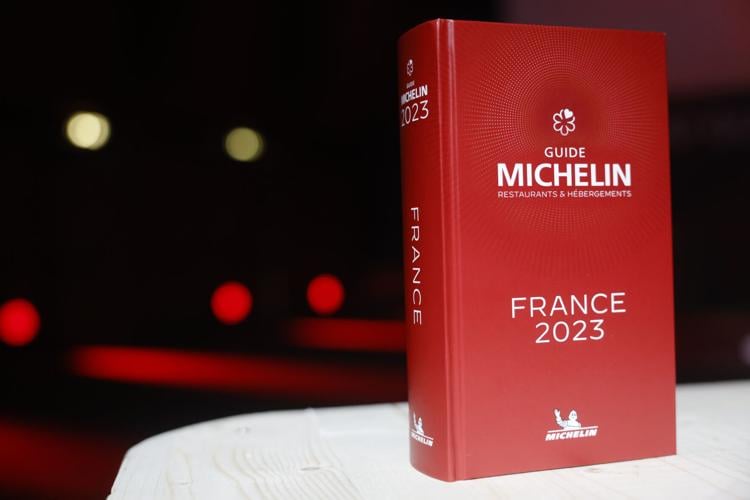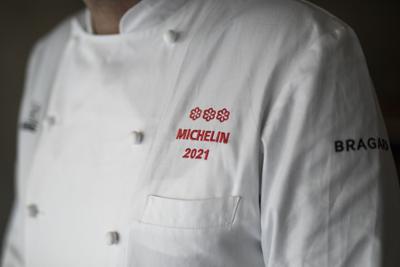The Michelin Guide will begin coverage of the American South in 2025, meaning restaurants in South Carolina can now earn a Michelin rating. But it comes at a price.
Those potential stars are costing the state more than $1 million over the next three years.
The French tire company’s compilation of the world’s best restaurants is only reserved for countries and cities sought out by its anonymous inspectors, a Michelin representative said. But in recent years, the money it needs to pay for meals and promote the resulting guide has been supplemented by funding from destination marketing organizations.
The first-of-its-kind U.S. regional guide will feature Alabama, Louisiana, Tennessee, Mississippi, North Carolina and South Carolina. The Atlanta Michelin guide, which was added in 2023, will also be included in the new American South guide, though no other cities in Georgia will be included.
Tourism groups from each state are paying Michelin to help make the new guide happen. Other Southern states that didn’t contribute, including Virginia, opted out of the guide, but they could be added in the future.
The pay-to-play format isn’t new to the Michelin Guide, considered by many to be the most trusted authority on fine dining restaurants. With the guide and its highly coveted stars comes the kind of global notoriety that attracts tourists who are increasingly choosing travel destinations for their food scene.
Guides from South Korea to Colorado were made possible by financial contributions from city and state marketers who valued Michelin’s appeal to visitors. In South Carolina, leaders of marketing groups across the state said the new American South guide could be a game-changer, particularly for international tourism efforts.
South Carolina chefs interviewed by The Post and Courier are enthusiastic about the Michelin Guide’s ability to further catapult the state’s food scene. But its relationship with destination marketing groups renews questions about the guide's ability to remain impartial while accepting funds, some of which are fronted by taxpayers.

The 2023 Michelin Guide sits on a table before the stars ceremony in Strasbourg eastern France, Monday, March 6, 2023.
International appeal
Michelin, whose North American headquarters are in Greenville, got into the restaurant guide business more than 100 years ago.
To encourage French citizens to drive more — and thus buy more tires — brothers André and Édouard Michelin decided to publish a free pocket-sized guide with information that came mostly from tire salesmen.
Though it started as a sales pitch, the guide took on a life of its own over the next several years, and by the 1920s it was a go-to source for French restaurant recommendations. In the 1930s, Michelin started hiring undercover diners and giving out the stars that today denote some of the world’s best restaurants.
There are more than 3,000 restaurants with Michelin stars, 300 of which are in the U.S. as of 2024. They’re located in places where the guide operates: California, Colorado, New York City, Chicago, Florida, Texas, metro Atlanta and Washington, D.C. The six additional states in Michelin’s new American South guide are anticipated to add to that list.
Carl Sobocinski, president and founder of Table 301 Hospitality in Greenville, has been advocating to bring the Michelin Guide to South Carolina since Euphoria, Greenville's premier food festival, began a formal partnership with the French company about a decade ago.
The conversations were at first less strategic than inquisitive, Sobocinski said. But then, about two years ago, with the guide’s U.S. expansion well underway, the conversations shifted from something more abstract to something tangible.
Sobocinski connected with Duane Parrish, director for the S.C. Department of Parks, Recreation & Tourism, who began talks with Michelin before the guide entered Florida in 2022. Those discussions continued when Parrish traveled to France with his counterpart in Mississippi and the president of Travel South USA, Liz Bittner.
Parrish is a board member of Travel South, a nonprofit regional destination marketing group that has been promoting the South for more than 50 years. Their goal of attracting the Michelin Guide came amid growth in the U.S. culinary tourism market, expected to reach $6.2 trillion by 2033.
“There’s so much of an emphasis on food now,” Parrish said.
And the Michelin Guide and its popular app are one of the resources fueling that trend.
The idea to create a regional guide that comprised multiple states appealed to Michelin, whose inspectors already had the area on their radar, Parrish told The Post and Courier.
He and others within Travel South feel the guide will bring enough value to the region to warrant annual six-figure payments.
“We couldn’t be prouder to be the first region in the country to showcase our culinary assets in big cities and small towns on a global stage," Bittner said in a statement. "A heartfelt thank you to the state tourism offices and destinations for their participation in this groundbreaking initiative."

Explore Charleston CEO Helen Hill has a seat on the board of a national trade group that represents the travel industry.
Michelin partners with destination marketing organizations in some, but not all, U.S. guide locations. The company does not have agreements in New York City, Chicago and Washington, D.C. — the guide’s first North American destinations. California's tourism board, Visit California, became the first to pay when it reportedly gave $600,000 to Michelin for a statewide guide in 2019.
For the American South guide, states across the region were given the option to opt in or out. South Carolina, for its part, is paying the tire company $350,000 annually. In an email response to The Post and Courier's questions, Michelin Guide International Director Gwendal Poullennec said the money will “fund communication, digital and marketing campaigns to promote the selections and broadcast them around the world.”
International tourism is one of the areas where South Carolina can benefit most, said Charleston Area Convention & Visitors Bureau CEO Helen Hill. The Michelin Guide can help expand its efforts to attract visitors from Europe, Asia and other parts of the world, who often spend more and stay longer.
Hill called the idea to focus on the entire region, and not just South Carolina, “innovative.”
“I think it makes it a stronger guide when you do get to look at the American South together,” Hill said, adding that international tourism is “a really important growing market for us.”
The Michelin Guide can have local impacts, too.
When a community has a restaurant that receives a nod from the Michelin Guide, there is immediate “brand value and global recognition,” said Heath Dillard, president and CEO of Visit Greenville.
Dillard pointed to findings from an Ernst & Young study that showed two out of three people polled said they would choose a Michelin destination over a comparable one. The increased attention from food enthusiasts trickles down to the community as a whole, Dillard said.
“The reason for their trip could be food related,” he said. "But the activities they do during their trip are going to have a broad-based effect on our local community and our local economy.”
Follow the money
Taxpayer money is partially funding Michelin's American South Guide.
The Charleston Area Convention & Visitors Bureau — which generates revenue from accommodation taxes, state grants, private memberships and publications — was one of five South Carolina city marketers to agree to terms with Michelin. Commonly known as Explore Charleston, the nonprofit will pay $62,000 annually.
Visit Greenville is contributing $61,000; Visit Myrtle Beach, $58,500; Experience Columbia, $42,250; and Visit Hilton Head, $26,250. The state Department of Parks, Recreation and Tourism is paying the remaining $100,000 yearly balance.
The amounts are pro-rated based on the number of restaurants in each destination, a Department of Parks, Recreation and Tourism representative told The Post and Courier. The group has signed a three year contract with the option to extend.
If the payments stop, Michelin could drop the guide altogether.
When asked about the money, Poullennec said he could not discuss commercial terms of the deal "for competitive reasons," but Parrish was forthright about the state's contributions. He sees it as an investment in a flourishing part of South Carolina culture, and said the nonprofit has not received pushback since granting the funding.

The Michelin Guide has been considered a standard of excellence in the culinary world for over 100 years.
“It’s a game-changer for a restaurant that gets a star,” he said. “They’re in the ballgame now.”
Destination marketing organizations around the state have been criticized for running almost entirely on the public’s dime without the financial scrutiny normally required by the government. With so many headwinds currently facing Charleston restaurateurs, Nikko Cagalanan and Paula Kramer, owners of Kultura, would like to see more transparency around the use of the state's hospitality tax funds, which could go toward issues impacting the businesses who collect it, such as downtown parking.
The couple said the new guide will be great for the city. But they wonder if it will simply drive even more diners to popular places with a steady flow of financial backing.
"I'm interested to see if it will help our small, independent restaurants," Kramer said.
Though tourism boards are helping foot the guide’s bills, Poullennec said it does not change anything about its inspectors’ process. Restaurants are independently and anonymously reviewed by former hospitality professionals who “enjoy complete independence in choosing the restaurants they visit.”
“This fundamental principle is clearly written in the contract,” he said. “Destination marketing organizations are required to accept this principle — that at no time should the DMO attempt to interfere with the editorial independence of the Michelin Guide.”
Groups like Travel South and Explore Charleston will find out Michelin Guide’s selected list of restaurants for the American South at the same time as the general public, added Poullennec. Those names are expected to be revealed later this year at a ceremony celebrating the new guide.
Why the American South?
Michelin’s newest guide is the first in the U.S. to highlight an entire region. It’s part of a broader movement to ensure sustainability, Poullennec said.
“With this regional approach, we can better prioritize destinations matching our demanding criteria, while constantly observing the growth and evolution of potential future destinations to be included within the region.”
The company’s inspectors, who dine at starred restaurants multiple times and evaluate only the cuisine itself, found “a certain level of maturity in the American South, both in the culinary offer and the dynamism of the industry,” Poullennec said.
The new guide will feature restaurants from across the state and region, not just major culinary cities like Charleston, Columbia and Greenville. It also includes restaurants in metro Atlanta, even though the city has had its own guide since 2023.
Establishments in other parts of Georgia were left out of the Atlanta Guide and will not be part of the one highlighting the American South, according to a report by The Atlanta Journal-Constitution, drawing some criticism from Savannah chefs.
American South restaurants will be able to earn one, two or three stars: one means “worth a stop,” two is for places that are “worth a detour” and three Michelin star destinations are “worth a special journey.”
Not every Michelin-featured restaurant will be given a star. Some will simply be featured in the guide, while others might be awarded a Michelin Bib Gourmand, which "recognizes friendly establishments that serve good food at moderate prices," or a Michelin Green Star, which highlights restaurants at the forefront of the industry when it comes to sustainable practices.
Poullennec did not indicate how many restaurants would be featured in the American South guide.

Mike Lata, chef and co-owner of The Ordinary, pauses to greet customers during dinner service, Friday, April 12, 2024, in Charleston. Lata, who runs FIG and The Ordinary, has earned multiple top cooking recognitions from the James Beard Awards and has been featured on a variety of television cooking programs.
'Mystery and excitement'
Nico Abello has a unique perspective on the Michelin Guide. In 2016, the chef helped open L’Appart in New York City. The restaurant earned a Michelin star within six months of its debut.
Abello, who moved to Greenville three years ago and last month announced his new restaurant project with Table 301 Hospitality, admitted he felt a measure of relief after he moved to a city devoid of the pressures of earning Michelin recognition.

Chef Nico Abello, chef with Table 301 Hospitality, in March announced plans to open a new restaurant in Greenville. The chef earned one Michelin star while leading the kitchen at L'Appart in New York City.
“It is a dangerous game,” Abello said of the intensity of maintaining a star. “You think about it almost every day, and it's where you need to focus on customer and not just the Michelin Guide.”
Abello still sees Michelin as a meaningful accolade that not only drives innovation but also helps instill a greater sense of respect and honor for the entire culinary industry.
Other chefs echoed that sentiment.
Mike Lata of FIG and The Ordinary in Charleston admitted that he and the teams at both downtown Charleston restaurants will “have feelings” about the chance at earning a Michelin star. There will be disappointment if they aren't eventually recognized and elation if they are.
He hopes striving for the latter will be a motivator, but earning a star will not dictate food or service. The restaurants' staffs won't let the Michelin Guide define how they feel about themselves, Lata said.
“We’re very excited that Michelin is coming into town,” he said. “I think that we’re trying to have the healthiest attitude about it.”
For Jason Stanhope, chef of Sullivan's, the Michelin Guide is another celebration of the industry he loves. And the French company doesn't just highlight fine dining destinations anymore, he said, as evidenced by the Michelin stars that were recently awarded to barbecue restaurants in Texas.
"There's a lot of mystery and excitement around it," Stanhope said. "Whether you believe in it or not, I think it's a good thing."
Lillia Callum-Penso in Greenville contributed to this report.







